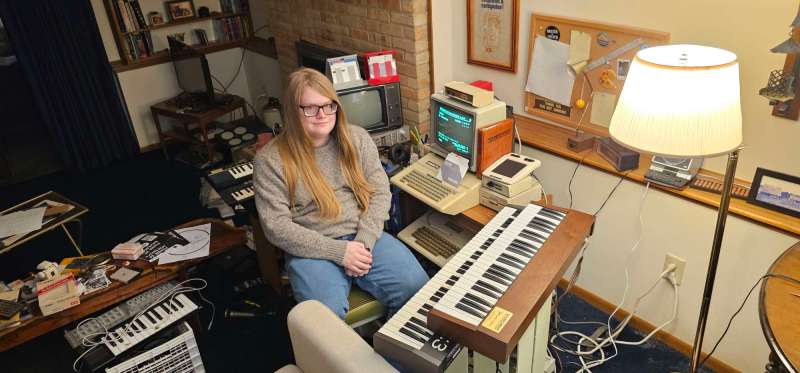The Greengate DS:3 had been re-created in the form of the Goodgreat. Now [Bea Thurman] had to put it to use. If the Greengate DS:3 card was rare, the keyboard was nearly impossible to find. After a long search, [Bea] bought one all the way from Iceland. The card of course came courtesy of [Eric].
It was time to connect the two together. But there was a problem — a big problem. The GreenGate has a DB-25 connected via a ribbon cable to the board’s 2×10 connector. The keyboard that shipped with those cards would plug right in. Unfortunately, [Bea’s] keyboard had a DIP-40 IDC connector crimped on its ribbon cable. What’s more the connectors for the sustain and volume pedals were marked, but never drilled out. The GreenGate silk screen was still there though.
Maybe it was a prototype or some sort of modified hardware. Either way, the 40-pin DIP connector had to go if the keyboard ever were to work with the card. What followed were a few hours of careful wire tracing
Tracing out pins is always a pain. To make it worse, the only DB-25 connector [Bea] had on hand was an Insulation Displacement Connector (IDC). It’s the right part to use for the ribbon cable attached to the keyboard, but not what you’d want to use to test pinouts. These connectors are generally crimped once.
 The GreenGate keyboard and foot pedals are matrix scanned – much like a standard alphanumeric keyboard. The keyboard also needed some internal cleanup after 40 years. Like many ‘boards of the day, it used small spring wires that made contact with a common bar. After some painstaking debugging, working directly with [Eric] on video chat, [Bea] had the system working. Now came the fun part — using the keyboard to make music.
The GreenGate keyboard and foot pedals are matrix scanned – much like a standard alphanumeric keyboard. The keyboard also needed some internal cleanup after 40 years. Like many ‘boards of the day, it used small spring wires that made contact with a common bar. After some painstaking debugging, working directly with [Eric] on video chat, [Bea] had the system working. Now came the fun part — using the keyboard to make music.
The Greengate hardware is impressive, but the software is stunning. [Bea] got in touch with [Colin Holgate], who wrote it. He’s also the “gate” in Greengate. With [Colin’s] software, Waveforms can be edited in an oscilloscope view, much like one would find in a modern DAW. The software even includes a pattern editor, which can be used for arpeggios.
The GreenGate has 4 notes of polyphony, is multitimbral, and can layer multiple samples across the keyboard. Considering this is all handled on an Apple II+ with a green screen monitor for a UI, impressive is an understatement.
[Bea] gives us a great walkthrough using the system. She starts by sampling audio from a cassette. With the audio in memory, she uses this to build a simple song. The entire setup made an appearance at VCF MidWest, so if you saw it in person let us know in the comments!
















Awesome!
Thanks for this, Adam!
Such an amazing instrument. Never thought this kind of thing possible with the Apple II. Kudos to Bea for all the hard work and perseverance of learning about it, finding it, getting it, making it work, and making amazing stuff with it! I very much like the vibe of the superphone music and video’s. Also thank you for letting everyone play with this at vcfmw for a few years in a row now!